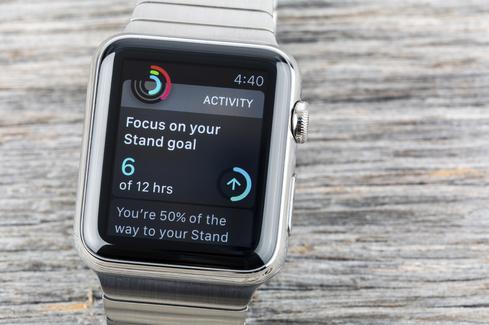IDC expects consumers to adopt smartwatches in record numbers over the next year, with the Apple Watch leading the way.


8 Hot Wearable Devices To Get You Healthy In 2016
8 Hot Wearable Devices To Get You Healthy In 2016 (Click image for larger view and slideshow.)
Makers of wearable devices will ship 111 million units by the end of 2016, and IDC expects that number to double by 2019. As smartwatches begin to mature, these devices will soon make up a greater percentage of the market than fitness bands.
Apple's smartwatch will be the market leader for the foreseeable future.
This year shipments of wearables will tally up to about 80 million. Of that total, about 20.1 million, or one-quarter, will be smartwatches, as opposed to simpler fitness trackers. IDC predicts Apple will own the greatest percentage of the smartwatch market (61%) with shipments of 13 million Apple Watches.
Google's Android Wear platform will trail far behind, with shipments of about 3.2 million for the year at 15.8% of the market. Considering the wide variety of Android Wear devices, that's not a very impressive number. Pebble OS will follow with 1.8 million (8.6%) and Samsung's Tizen platform, surprisingly, will ship about 1.7 million (8.2%).
Fitness bands constitute the majority of wearable shipments this year, but the market will shift over the next few years.
"In a short amount of time, smartwatches have evolved from being extensions of the smartphone to wearable computers capable of communications, notifications, applications, and numerous other functionalities," IDC analyst Ramon Llamas notes in the Dec. 17 report. "Cellular connectivity, health sensors, not to mention the explosive third-party application market, all stand to change the game and will raise both the appeal and value of the market going forward."
IDC believes shipments of smartwatches will blossom to 34.3 million in 2016 and to 88.3 million by 2019.
"Smartwatch platforms will lead the evolution," added Llamas. "As the brains of the smartwatch, platforms manage all the tasks and processes, not the least of which are interacting with the user, running all of the applications, and connecting with the smartphone."
WatchOS and Android Wear have grown up quickly. Apple has already shipped a second-generation operating system, adding important capabilities like apps that run on the wearable itself rather than the smartphone.
Android Wear, too, has earned new features like cellular connectivity.
Apple may ship as many as 45 million smartwatches by 2019, giving it a slim majority at 51.1%. Android Wear shipments will increase tenfold to approximately 34.3 million at 38.8%. Competing platforms Pebble and Tizen will see only modest growth, jumping to 2.3 million and 2.5 million by 2019, respectively. Total wearable shipments for 2019 may top 214 million.
[Find out which smartwatches will make the best gifts this year.]
Apple has not disclosed sales figures for the Apple Watch, nor will it. CEO Tim Cook has steadfastly refused to discuss the numbers, claiming the company doesn't want to give its competitors any clues. He's only said that the company shipped more watches during the third quarter than the second, and that he expects Apple will ship more during the fourth quarter than it did during the third.
Many are counting on Apple to debut a new Watch by March or April. Android Wear makers will soldier on, their new models expected to appear at the Consumer Electronics Show in January and at Mobile World Congress in February.
**Elite 100 2016: DEADLINE EXTENDED TO JAN. 18, 2016** There's still time to be a part of the prestigious InformationWeek Elite 100! Submit your company's application by Jan. 18, 2016. You'll find instructions and a submission form here: InformationWeek's Elite 100 2016.
About the Author(s)
You May Also Like







